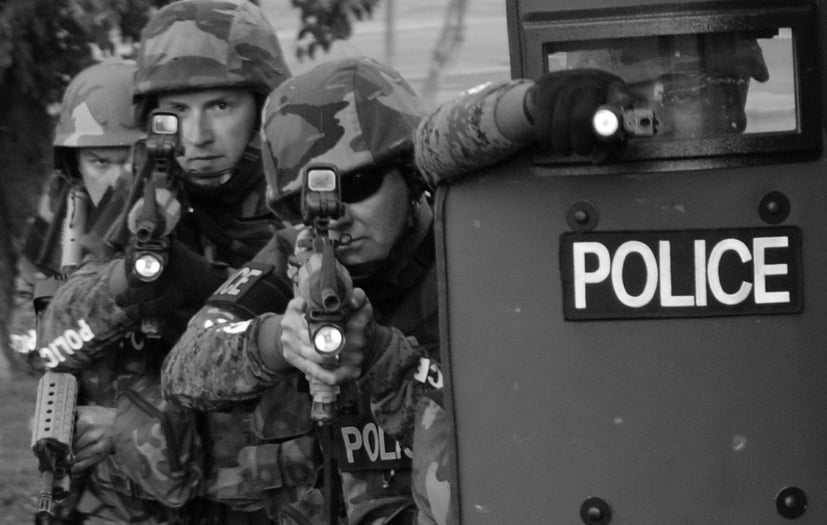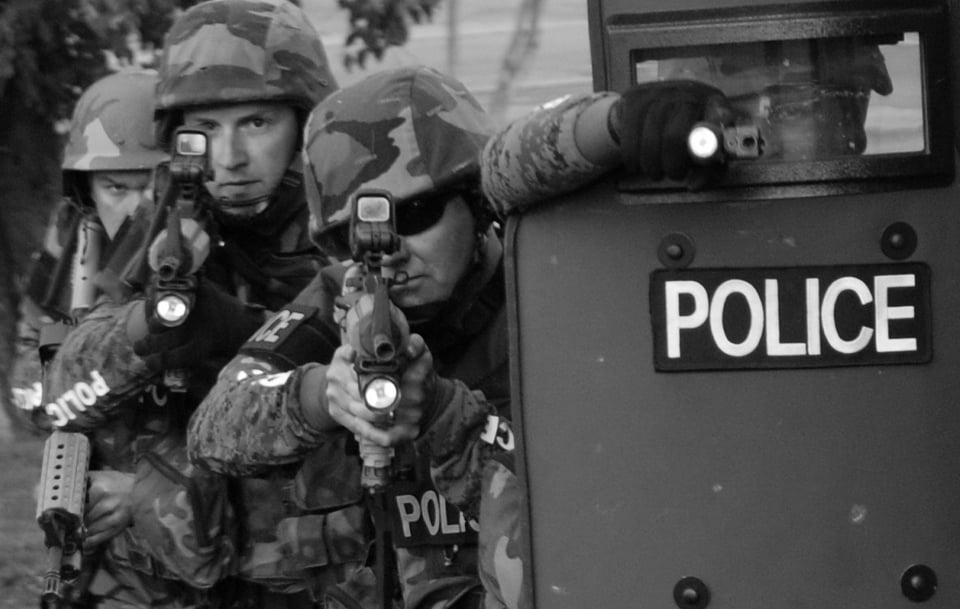In the late 1980’s, several deaths of mentally ill persons attributed to the Memphis Police Department (MPD) resulted in a change in tactics for how law enforcement handled these types of cases. MPD corrected the problem by partnering with the mental health community. The partnership led to the establishment of Crisis Intervention Teams (CIT) within MPD. Gradually, law enforcement across the country adopted The Memphis CIT model as the best program for training law enforcement to deal with people suffering from mental illness.

On February 27, 1997, Larry Phillips and Emil Matasareanu, wore black masks, reinforced body armor, and carried automatic weapons as they attempted an armed robbery of the Bank of America branch in North Hollywood, California. Forty-four minutes and 1,800+ rounds later, law enforcement across the country would change tactics. Patrol rifles for everyone.
April 20, 1999, Eric Harris and Dylan Klebold murdered 12 students and one teacher at Columbine High School in a complex active violence attack. Law enforcement was criticized for a delayed response in entering the building. As a result, again, law enforcement around the country changed tactics. Ballistic shields and first responder training in active shooter mitigation for everyone.
All three of the changes were warranted and smart decisions but we are slowly and surely becoming reliant on them as a primary response to static barricades and high-risk suicide attempts. Considering the following which is based on true stories.
A negotiations team supervisor received a phone call one night from a frustrated member of the negotiations team. “You are not going to believe what the (expletive) is going on here.” The team supervisor inquired and he said, “They are talkin’ about making entry and going in to get this guy, who they know fell asleep on top of his gun!” There the team supervisor was. In the unenviable position of being asked to be “That guy”. “That guy” is the guy who is an hour (at least 40 miles) away from an incident, and calls the officer in charge to give advice on how to handle a situation. The team supervisor I hates “That Guy”. From the frustrated negotiator, he learned that it was a domestic dispute in which one brother assaulted the other. The victim swore to a warrant against his brother and officers went to the location to serve it. After knocking on the door and receiving no answer, they peeked in a bedroom window and saw him sleeping on his mattress. The victim told the officers that he usually slept with a handgun under the mattress. They also knew that the suspect had a court hearing the following day.
Against his internal dialogue, the team supervisor called the officer in charge. She tells him that she has three guys trained with a patrol rifle, a shield, and a CIT officer. Her plans were to “breach” (her word) the door, has two officers provide cover from behind the shield with another covering from the window, and go in and arrest the suspect. Wait…what? The team supervisor asked her if it was necessary to take him into custody on a misdemeanor tonight. She said, “We are here and I have the resources”.
The team supervisor suggested to her that if it was indeed necessary to take him into custody right now, perhaps a SWAT surround and call would be a better option.
Or better yet, why not wait until he goes to court in the morning, where he is more likely to be unarmed, and take him into custody then? She hit the team supervisor with the “That Guy” label. Fair enough he thought. The team supervisor told her that it sounded to him like she was offended by the call and assured her that was not his intention. She continued with her course of action and the suspect was taken into custody without incident.
Or take the case of the dispatcher who gets a call from a neighboring jurisdiction advising that there was a person on the phone who is walking around the streets of your jurisdiction, threatening to commit suicide by firearm. The patrol supervisor who hears the call immediately asks the communications technician to dispatch a CIT officer. The CIT officer located the suicidal subject inside a vehicle and began voice-to-voice dialogue. This situation too ended with no one being hurt. No harm, no foul. How long will it be before our luck runs out?
The advent of patrol rifles, shields, Paramilitary Assault Counter Offensive Plans (PACOPS), and CIT is leading to an increase in watch commanders who are reluctant to “pull the pin”. They have grown hesitant in getting the appropriate (SWAT and negotiators) resources to an incident that calls for a specialized response. Their rationale is, if they have personnel qualified with a special weapon and communication technique, they do not need to burden the agency with a full call-out, ignoring SWAT and negotiations teams. Both of these teams are trained to work in synchronization, applying tactics, advanced communications techniques, and threat assessment in order to maximize safety and the chances for a successful resolution. Relying on anyone else to manage a static hostage/barricade incident or high-risk suicide is flirting with disaster.

